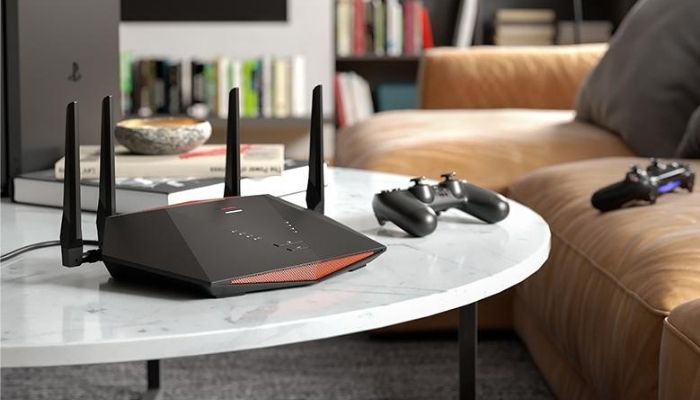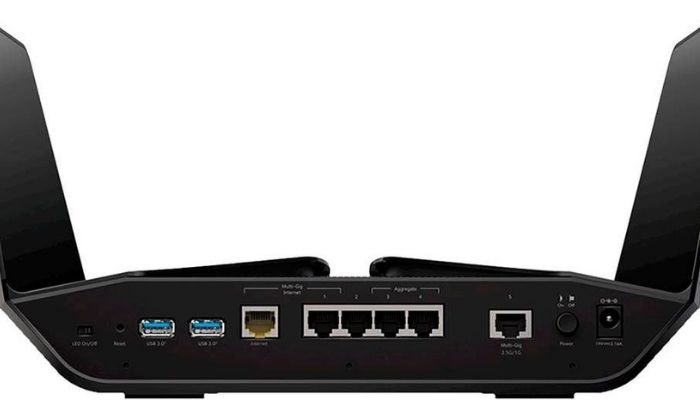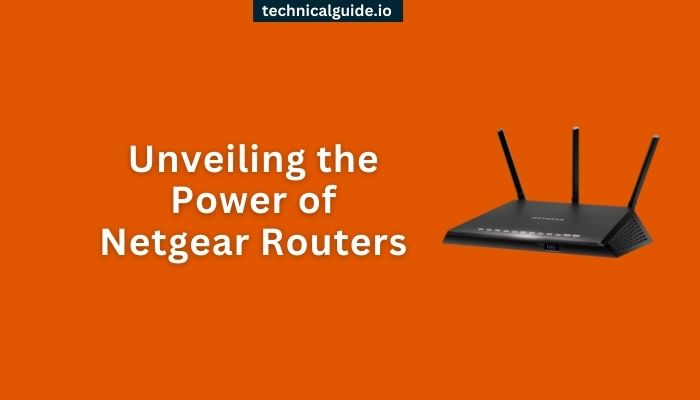In an era dominated by the internet, the need for a reliable and efficient router is paramount. Among the many options available, Netgear routers have risen to prominence, setting new standards for performance, security, and user-friendly features. In this comprehensive guide, we’ll explore what Netgear routers are and why you need one in your home or office. We’ll delve into the process of selecting the perfect Netgear router, setting it up, troubleshooting common issues, optimizing it for speed and security, updating firmware and software, and harnessing the power of Netgear’s features and services.
Additionally, we’ll compare Netgear routers with other brands and models, provide tips on accessories, and guide you on contacting Netgear support and customer service. Let’s embark on this journey to discover the world of Netgear routers and unlock their potential.
What are Netgear Routers and Why Do You Need One?
Netgear routers are renowned for their exceptional performance, robust security features, and user-friendly interface. These routers play a pivotal role in providing connectivity, sharing resources, and ensuring a seamless internet experience. In this chapter, we’ll explore why Netgear routers are indispensable for your home or office network.
- Reliable Connectivity Netgear routers are engineered to provide a stable and high-speed internet connection. They offer a range of models, from basic to advanced, catering to the diverse needs of users. Whether you’re streaming high-definition videos, participating in online gaming, or simply browsing the web, Netgear routers ensure a reliable and uninterrupted connection.
- Enhanced Security Security is a paramount concern in the digital age. Netgear routers come equipped with robust security features, including firewalls, VPN support, and parental controls. With these, you can safeguard your network from cyber threats, control access, and protect your personal data.
- User-Friendly Interface Netgear routers boast an intuitive interface, making them accessible even for users with limited technical expertise. Setting up and configuring your router is a breeze, and you can take advantage of various features without getting lost in a complex setup process.

How to Choose the Best Netgear Router for Your Home or Office
- Selecting the right Netgear router is crucial to ensure that it meets your specific needs. In this chapter, we’ll provide a comprehensive guide on how to choose the perfect Netgear router for your home or office.
- Understanding Your Needs Begin by assessing your requirements. Consider the number of devices in your network, the area you need to cover, and the types of activities you engage in online. Understanding these factors will help you determine the right model for your needs.
- Choosing the Right Model Netgear offers a wide range of router models, including Nighthawk, Orbi, and more. Research and compare the features of different models to find the one that aligns with your requirements. Pay attention to specifications like speed, range, and available ports.
- Budget Considerations Determine your budget for a Netgear router. While premium models offer top-of-the-line performance and features, more budget-friendly options still provide excellent connectivity without breaking the bank.
How to Set Up and Configure Your Netgear Router
- Now that you’ve chosen the ideal Netgear router, it’s time to set it up and configure it to your preferences. In this chapter, we’ll walk you through the step-by-step process of setting up your Netgear router.
- Unboxing and Hardware Setup Start by unboxing your router and connecting it to your modem. Follow the included instructions to ensure a proper hardware setup. Make sure the router is placed in a central location for optimal coverage.
- Accessing the Router’s Interface Using a computer or mobile device, connect to your router’s Wi-Fi network or use an Ethernet cable. Open a web browser and enter the router’s default IP address (commonly 192.168.1.1). Log in using the default username and password provided in the user manual.
- Configuring Basic Settings Once you’re in the router’s interface, you can configure basic settings like network name (SSID) and password. Customize your network to make it more secure and easily identifiable.
How to Troubleshoot Common Issues with Your Netgear Router
- Even the best routers can encounter issues. In this chapter, we’ll explore common problems that Netgear router users may face and how to troubleshoot them effectively.
- Connectivity Problems If you experience slow or intermittent internet connectivity, check for interference, update firmware, and reboot your router. You can also consider moving it to a different location for better signal strength.
- Forgotten Password If you forget your router’s login credentials, you can reset it to factory settings and reconfigure it from scratch. Be sure to change the default password afterward for security.
- Firmware Updates Regularly updating your router’s firmware is essential to maintain optimal performance and security. Netgear provides user-friendly interfaces for updating firmware, making the process straightforward.

How to Optimize Your Netgear Router for Speed and Security
In this chapter, we’ll delve into the strategies and techniques to optimize your Netgear router for both speed and security.
- Speed Optimization To maximize your router’s speed, ensure it’s placed in an open area with minimal obstructions. Utilize advanced features like Quality of Service (QoS) to prioritize specific devices or applications for the best performance.
- Security Enhancements Enhance security by enabling encryption (WPA2/WPA3) for your Wi-Fi network and setting up a strong password. Consider using the built-in parental controls to filter and monitor content for a safer online environment.
How to Update Your Netgear Router Firmware and Software
Keeping your router’s firmware and software up-to-date is crucial to maintain security and functionality. In this chapter, we’ll guide you through the process of updating your Netgear router.
- Checking for Updates Access your router’s web interface and navigate to the firmware update section. Check for available updates, and if one is available, proceed with the installation.
- Firmware Update Best Practices Before updating, back up your router’s settings, and make sure your network is running smoothly. Once the update is complete, reconfigure any settings if needed.
How to Use Netgear’s Features and Services
Netgear offers a range of innovative features and services to enhance your networking experience. In this chapter, we’ll explore key services like NETGEAR Armor, Smart Parental Controls, and the Nighthawk app.
- NETGEAR Armor NETGEAR Armor is a cybersecurity service that provides real-time protection against threats like malware and phishing. It offers an additional layer of security to keep your network and devices safe.
- Smart Parental Controls Smart Parental Controls allow you to manage and monitor your children’s internet activity. You can set time limits, filter content, and receive notifications about their online behavior.
- Nighthawk App The Nighthawk app provides a convenient way to manage your router from your mobile device. You can monitor and control your network, run speed tests, and set up guest networks with ease.
How to Compare Netgear Routers with Other Brands and Models
While Netgear routers offer impressive features, it’s essential to consider other options in the market. In this chapter, we’ll provide a framework for comparing Netgear routers with alternatives from different brands and models.
- Key Specifications Compare specifications like speed, range, and the number of available ports. Determine if the router supports the latest Wi-Fi standards like Wi-Fi 6.
- User Reviews Check user reviews and ratings to gain insights into the performance, reliability, and user-friendliness of the router you’re interested in.
- Pricing Consider the cost of the router and whether it aligns with your budget. Keep in mind that premium models come with advanced features and performance.
How to Get the Most Out of Your Netgear Router with Accessories and Tips
Enhance your Netgear router’s capabilities with accessories and useful tips. In this chapter, we’ll explore how to get the most out of your Netgear router.
- Accessories Consider adding accessories like Wi-Fi extenders, range boosters, and network switches to expand your network coverage and connectivity options.
- Tips for Performance Optimize your router’s performance by regularly updating firmware, reducing interference, and configuring QoS settings for specific applications.
How to Contact Netgear Support and Customer Service
In the final chapter, we’ll discuss how to contact Netgear support and customer service for assistance with any issues or inquiries you may have.
- Online Support Netgear offers extensive online support through its website, including FAQs, documentation, and forums where users can exchange information and solutions.
- Customer Service If you need direct assistance, you can contact Netgear’s customer service via phone or email. They have a dedicated team of experts ready to help you resolve any router-related issues.
Conclusion
Netgear routers have emerged as a powerful and reliable choice for home and office networking needs. With their exceptional performance, robust security features, and user-friendly interfaces, Netgear routers have become indispensable in the digital age. This comprehensive guide has covered everything you need to know, from selecting the right router to optimizing its performance, making the most of Netgear’s services, and ensuring that you stay connected seamlessly. Armed with this knowledge, you can confidently embrace the power of Netgear routers and experience a superior level of connectivity in your home or office.
Frequently Asked Questions (FAQs)
Here are some frequently asked questions and answers about Unveiling the Power of Netgear Routers
1. Can I Use A Netgear Router With My Internet Service Provider (ISP), Or Do I Need To Use The Router Provided By My ISP?
You can absolutely use a Netgear router with your ISP, and in many cases, it’s a great choice. Netgear routers are compatible with various ISPs and can often provide better performance and features compared to the routers provided by ISPs. Just ensure that your Netgear router is configured properly to work with your specific ISP.
2. How Often Should I Update My Netgear Router’s Firmware, And Why Is It Important?
It’s recommended to check for firmware updates at least every few months. Regular firmware updates are crucial for fixing security vulnerabilities, improving router performance, and adding new features. Keeping your router’s firmware up-to-date helps ensure a secure and optimal network experience.
3. What Is The Difference Between The Nighthawk Series And Orbi Series Of Netgear Routers?
The Nighthawk series is designed for high-performance single-router setups and is excellent for gaming and media streaming. On the other hand, the Orbi series is a mesh system that focuses on expanding Wi-Fi coverage across larger areas or multiple floors, making it ideal for large homes or places of business where signal strength may be a problem.
4. How Can I Restore The Factory Settings On My Netgear Router?
To reset your Netgear router to factory settings, locate the reset button (usually a small pinhole) on the router. For approximately 10 seconds, push and hold the reset button with a paperclip or other similar object. This will erase all custom settings, including your network name and password. After resetting, you’ll need to reconfigure the router from scratch.
5. Can I Use Netgear Routers With Third-Party VPN Services To Secure My Network?
Yes, Netgear routers often support VPN (Virtual Private Network) services. You can set up and configure a VPN on your Netgear router to secure your network’s internet traffic and protect your data. Make sure to choose a VPN service that’s compatible with your Netgear router model and follow the setup instructions provided by your VPN provider.
